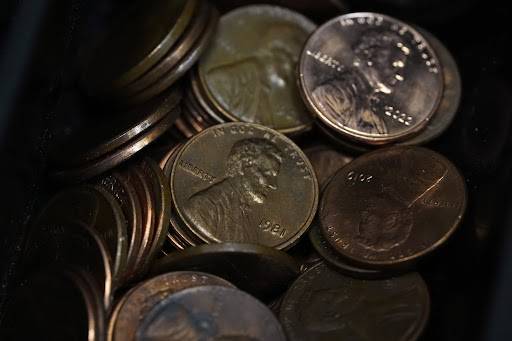Banks, retailers run short on pennies, resort to rationing

NEW YORK—The United States is running out of pennies.
President Donald Trump’s decision to stop producing the penny earlier this year is starting to have real implications for the nation’s commerce. Merchants all over the country have run out of pennies and are unable to produce exact change. Meanwhile, banks are rationing pennies for their customers.
One convenience store chain, Sheetz, got so desperate for pennies that it ran a promotion offering a free soda to customers who brought in 100 pennies. Another retailer says the lack of pennies will end up costing it millions this year.
“It’s a chunk of change,” said Dylan Jeon, senior director of government relations with the National Retail Federation.
The penny problem started in late summer and is only getting worse as the country heads into the holiday shopping season.
To be sure, not one retailer or bank has called for the penny to stick around. Pennies, especially in bulk, are heavy and are more often than not used exclusively to give customers change. But the abrupt decision to get rid of the penny has come with no guidance from the federal government. Many stores have been left pleading for Americans to pay in exact change.
“We have been advocating the abolition of the penny for 30 years. But this is not the way we wanted it to go,” said Jeff Lenard with the National Association of Convenience Stores (Nacs).
High costs
Trump announced on Feb. 9 that the United States would no longer mint pennies, citing the high costs. Both the penny and the nickel have been more expensive to produce than they are worth for several years, despite efforts by the US Mint to reduce costs. The Mint spent 3.7 cents to make a penny in 2024, according to its most recent annual report and it spends 13.8 cents to make a nickel.
“Let’s rip the waste out of our great nation’s budget, even if it’s a penny at a time,” Trump wrote on Truth Social.
The US Mint issued 3.23 billion pennies in 2024, the last full year of production, more than double that of the second-most minted coin in the country: the quarter. But the problem with pennies is that they are issued, given as change, and rarely recirculated back into the economy. Americans store their pennies in jars or use them for decoration. This requires the Mint to produce significant sums of pennies each year.
The government is expected to save $56 million by not minting pennies, according to the treasury department. Despite losing money on the penny, the Mint is profitable for the US government through its production of other circulating coins as well as coin proof and commemorative sets that appeal to numismatic collectors.
In 2024, the Mint made $182 million in seigniorage, which is its equivalent of profit.
Legal minefield
The lack of pennies has also become a legal minefield for stores and retailers. In some states and cities, it is illegal to round up a transaction to the nearest nickel or dime because doing so would run afoul of laws that are supposed to place cash customers and debit and credit card customers on an equal playing field when it comes to item costs.
So, to avoid lawsuits, retailers are rounding down. While two or three cents may not seem like much, that extra change can add up over tens of thousands of transactions. A spokesman for Kwik Trip, the Midwest convenience store chain, says it has been rounding down every cash transaction to the nearest nickel. That’s expected to cost the company roughly $3 million this year. Some retailers are asking customers to give their change to local or affiliated charities at the cash register, in an effort to avoid pennies as well.
The treasury department did not respond to a request for comment on whether they had any guidance for retailers or banks regarding the penny shortage or the issues regarding penny circulation.
The United States is not the first country to transition away from small-denomination coins or discontinue out-of-date coins. But in all of these cases, governments wound down the use of their out-of-date coins over a period of, often, years.
For example, Canada announced it would eliminate its one-cent coin in 2012, transitioning away from one-cent cash transactions starting in 2013 and is still redeeming and recycling one-cent coins a decade later. The “decimalization” process of converting British coins from farthings and shillings to a 100-pence-to-a-pound system took much of the 1960s and early 1970s.
The United States removed the penny from commerce abruptly, without any action by Congress or any regulatory guidance for banks, retailers or states. The retail and banking industries, rarely allies in Washington on policy matters related to point-of-sale, are demanding that Washington issue guidance or pass a law fixing the issues that are arising due to the shortage.
“We don’t want the penny back. We just want some sort of clarity from the federal government on what to do, as this issue is only going to get worse,” the Nacs’ Lenard said.

















